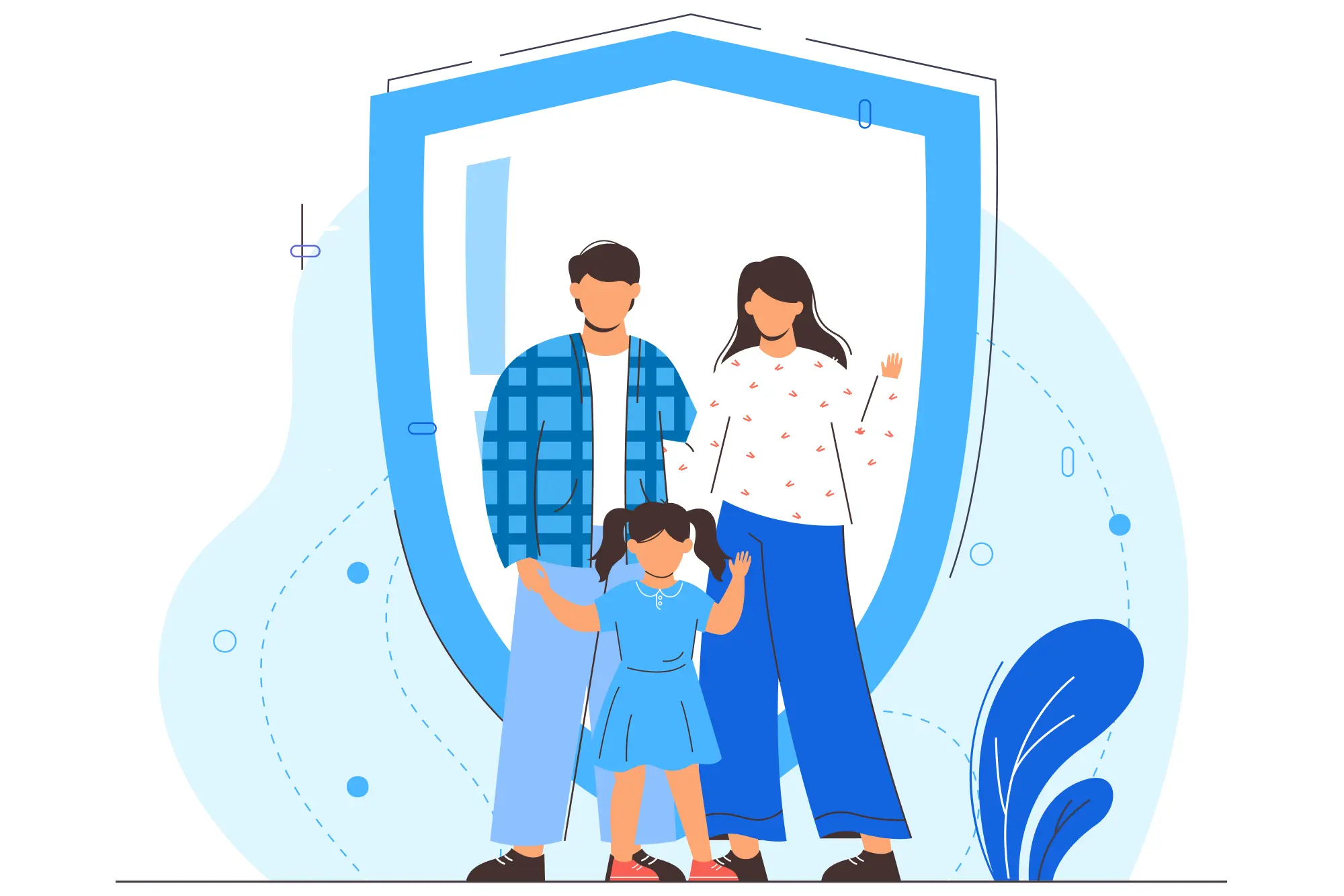No products in the basket.

Introduction
Anyone who works with children or young people in any capacity must complete designated safeguarding lead training. It’s essential that you understand the fundamentals of safeguarding lead training. Whether you work as a teacher, tutor, volunteer, or administrator you can safeguard children and young people from harm. Everything you need to know about designated safeguarding lead training will be covered in this blog post. It includes the advantages of participating in the training and their essential elements.
What is safeguarding?
Safeguarding is the action that is taken to ensure the safety of children and protect them from harm. Protecting children from abuse and mistreatment is what safeguarding entails. It prevents damage to children’s health or development. It also ensures children are growing up in settings associated with the provision of safe and effective care. Safeguarding also includes taking action to make sure that all children and young people have the best possible mental health. As well as working with them to increase their resilience and capability. As a result, “safeguarding” is a broad phrase that encompasses many areas of a child’s life.
What is safeguarding lead training?
A safeguarding lead training course or program teaches participants how to recognize and prevent abuse or neglect of vulnerable people, such as children or people with disabilities. Typical training topics include recognizing signs of abuse or neglect, as well as understanding the legal and ethical responsibilities of those in positions of authority. It entails devising effective responses to and reporting instances of abuse or neglect. The program addresses physical, emotional, sexual, and financial abuse. It also goes over the importance of maintaining physical and emotional boundaries in professional relationships.
The training can help teachers, social workers, and healthcare professionals who work with vulnerable populations. It is also recommended or necessary for non-profit volunteers and employees. Safeguarding lead training is an important step toward ensuring vulnerable people’s safety and well-being. It assists people in realizing the significance of their role in protecting the vulnerable.
Who needs safeguarding lead training?
Safeguarding lead training is a critical component for anyone working in a position of responsibility or authority. It involves the care, protection, and welfare of vulnerable individuals. This includes professionals in a wide range of industries and sectors, including:
Healthcare: Doctors, nurses, and other healthcare professionals are responsible for the well-being of their patients. So, they must be trained in safeguarding to identify and respond to potential abuse or harm.
Education: Teachers, school administrators, and other education professionals are responsible for the safety and welfare of students. Therefore, they must need safeguarding lead training to recognize and report abuse or neglect of students.
Social services: Social workers, case managers, and other professionals who work with vulnerable children, the elderly, and individuals with disabilities must be trained in safeguarding to protect the individuals they serve.
Law enforcement: Police officers and other law enforcement professionals must be trained in safeguarding to recognize and respond to abuse and to protect vulnerable individuals from harm.
Religious organisations: Clergy, religious leaders, and other members of religious organisations may be called upon to care for and support vulnerable people, and they must be trained in safeguarding to keep them safe.
Non-profit organisations: Many non-profit organisations work with vulnerable populations, and their staff and volunteers must be trained in safeguarding to protect the individuals they serve from harm.
Safeguarding lead training is essential for anyone who works with vulnerable individuals, or who is in a position of authority or responsibility that involves the care, protection, and welfare of others. It is important for organisations to provide regular training to their staff and volunteers to ensure that they are equipped to recognize and respond to potential abuse or neglect and protect the individuals they serve from harm.
What are the benefits of safeguarding lead training?
Safeguarding lead training is a crucial aspect of ensuring the safety and well-being of individuals in a variety of settings. It equips people with the knowledge and skills they need to recognize and report potential cases of abuse or neglect, as well as develop and implement effective safeguarding policies and procedures.
One of the most significant benefits of safeguarding lead training is that it helps to protect vulnerable people. Children, the elderly, and people with disabilities or mental illnesses are all welcome. It ensures that people are safe and that they receive the assistance and care they require. Individuals who complete safeguarding lead training are equipped with the skills and knowledge required to identify and report potential cases of abuse or neglect.
Another benefit of safeguarding lead training is that it promotes a safe and healthy environment for all people. This includes developing and implementing policies and procedures that promote safety and well-being, as well as training and educating all staff members on how to recognize and report potential cases of abuse or neglect. This contributes to the development of a culture of safety and awareness within an organisation, which can lead to fewer cases of abuse or neglect.
Overall, safeguarding lead training is an important part of ensuring the safety and well-being of people in a variety of settings.
How often should safeguarding lead training be carried out?
It is critical to conduct safeguarding lead training on a regular basis to ensure that staff and volunteers are up to date on best practices and current legislation. The frequency of safeguarding lead training will vary according to the organisation and the nature of the work. It is generally advised to complete safeguarding lead training at least once a year. This ensures that employees and volunteers are aware of any changes in legislation or best practices and are prepared to respond appropriately to any safeguarding concerns that may arise.
More frequent safeguarding lead training is critical in specific organisations or sectors, such as those working with children or vulnerable individuals. Because the risks of working with vulnerable people are larger, staff and volunteers in schools and nursing homes, for example, must be trained every six months or more frequently. As a result, employees and volunteers must exercise greater caution in identifying and responding to such issues.
Safeguarding lead training is an important factor of ensuring the safety and well-being of vulnerable individuals within a company. As a result, it is critical that staff and volunteers receive refresher training throughout the year. This can include regular updates on legislative changes or best practices, as well as ongoing education and support to assist staff and volunteers in identifying and responding to safeguarding concerns. The frequency of training will vary depending on the organisation and the nature of the work, but it is generally recommended that training be done at least once a year, with additional refresher training throughout the year.
Know more about safeguarding lead training
If you want to learn more about safeguarding lead training, there are several options available to you. Here are some of the common questions about lead safety training:
Contact training providers: Many organisations and institutions provide training for safeguarding leaders. You can contact these providers directly to learn more about their courses and qualifications.
Attend conferences and seminars: Conferences and seminars on safeguarding lead training are excellent places to learn about the most recent advancements in the field. They also provide an opportunity to interact with other professionals and subject matter experts.
Join professional associations: Many professional associations provide members with opportunities for training and development, including safeguarding lead training. Joining an association can also provide you with resources and support to help you advance your knowledge and skills.
Talk to your employer: If you are willing to take part in safeguarding lead training, you should talk to your employer. Many employers provide training and development opportunities for their employees, and they may be willing to assist you in obtaining the necessary qualifications.
There are numerous ways to learn more about safeguarding lead training. You can learn more about the training, qualifications, and resources available by contacting training providers. As well as attending conferences and seminars, joining professional associations, and speaking with your employer.
What makes a good safeguarding lead?
A good safeguarding lead is someone dedicated, knowledgeable, and experienced in safeguarding and child protection. They should possess a thorough understanding of relevant legislation, policies, and procedures, as well as the ability to apply this knowledge in real-life situations.
One key characteristic of a good safeguarding lead is their ability to communicate effectively with both children and adults. They should be able to build trust and rapport with children, as well as communicate clearly and assertively with other professionals and stakeholders. A good safeguarding lead should also be proactive in identifying and assessing risks and vulnerabilities, and have the ability to make difficult decisions in a timely and appropriate manner. They should also be able to work effectively within a team, and be able to lead and coordinate safeguarding activities across different agencies and sectors.
Another crucial characteristic of a successful safeguarding leader is the capacity to stay calm and collected under duress. They must be able to retain their impartiality and professionalism in tough and emotionally charged circumstances. As well as take necessary action to safeguard children and young people.
Finally, a good safeguarding lead should commit to ongoing professional development. Also, be willing to continuously learn and improve their skills and knowledge in this field. They should be able to stay up-to-date with the latest research and best practice. As well as be able to apply this knowledge to their work.
What does the term Safeguarding indicate in health and social care?
In health and social care, safeguarding entails protecting children and adults who are at risk of abuse or neglect. Concern, security, and assistance are all aspects of safeguarding. The goal is to protect the rights of vulnerable individuals. “Safeguarding” in healthcare refers to the protection of vulnerable individuals from harm or abuse. This includes safeguards to protect patients from staff abuse or neglect. It also includes policies and procedures to ensure that sensitive information. Such as patient medical records. These are use to safely and appropriately. Protecting healthcare workers from abuse by patients or their families is also part of safeguarding. Healthcare professionals must have policies and processes in place to ensure safeguarding practices throughout the organisation. These policies ensure that everyone understands their roles in keeping patients and each other safe.
Summary
The Designated Safeguarding Officer training course will teach you about the DSL job and the safeguarding framework in schools and colleges. You will learn how to recognize and respond correctly and safely to abuse issues, as well as analyse current safeguarding policies, regulations, and guidelines. Health and social care safeguarding is crucial. It protects the most vulnerable individuals.
Furthermore, it serves as a foundation for developing empathy and accepting responsibility. Without safeguards in health and social care, it is impossible to maintain a risk-free workplace. So, attend our Safeguarding Lead Training course to learn more about safeguarding. You will get enough knowledge and experience on protecting vulnerable individuals and will be prepared to assist them in leading better lives.
FAQs
Popular Courses
-
-
Workplace First Aid Training
-
Property Management
-
Level 2 Food Hygiene and Safety Course
-
Level 5 Mental Health Care – MCA and DOLS
-
Construction Project Management Course
-
PTLLS – Level 3 Award in Education and Training (AET)
-
Level 5 Diploma in Nutrition Course
-
Property Development Diploma
-
Healthcare Management Training
-
Level 4 Diploma in Child Psychology Course
-
Nursing Assistant Diploma
-
Child Care Advanced Diploma
-
Level 5 Diploma in Risk Management Course
-
Level 4 Diploma in Child Counselling Course
-
Level 2 Fire Safety
-
Diploma in Special Education Needs (SEN)
-
Level 3 Dyslexia Awareness
-
EYFS Teaching Diploma
-
Level 2 Award in Nutrition and Health




















